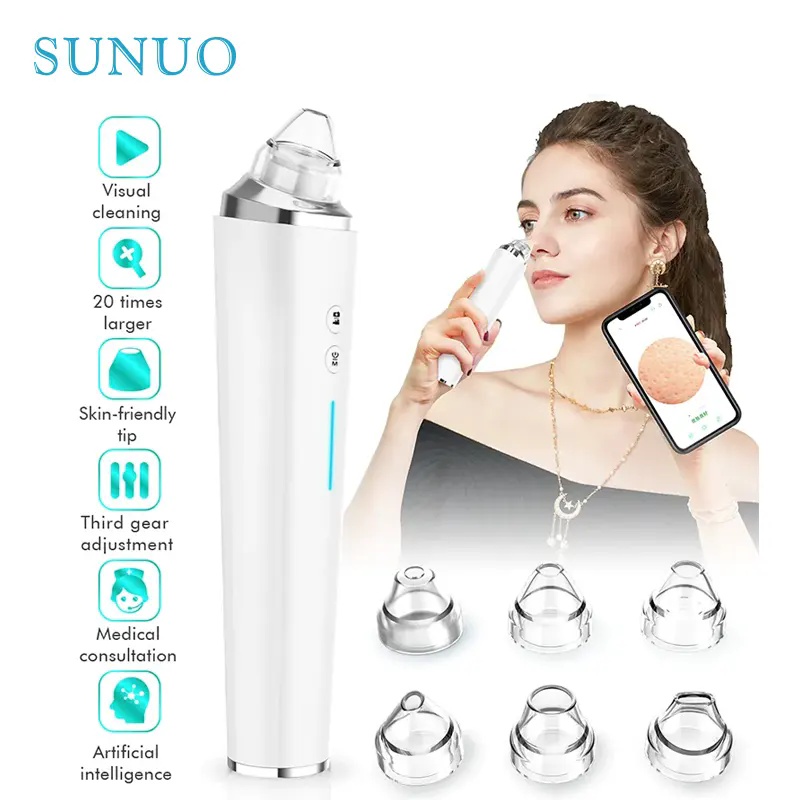Blackhead Remover: Your Essential Q&A Guide
2024-10-22
Blackheads are a common skin concern, and blackhead removers offer an effective way to tackle them. With so many tools and products available, it can be overwhelming to find the right solution. In this Q&A blog, we’ll answer key questions to help you choose the best blackhead remover and use it safely.
1. What is a blackhead remover?
A blackhead remover refers to any product or tool designed to eliminate blackheads—small, clogged pores that appear as dark spots on the skin. These tools can vary from pore strips and face masks to suction devices and extraction tools.
2. What causes blackheads?
Blackheads form when pores become clogged with excess sebum (oil), dead skin cells, and debris. When this material is exposed to air, it oxidizes, turning dark. Factors that contribute to blackheads include:
Oily skin
Hormonal changes
Improper skincare
Using heavy skincare or makeup products
3. What are the different types of blackhead removers?
1. Pore Strips
- Adhesive strips that pull out blackheads from the surface of the skin.
Best for: Quick removal on the nose and T-zone.
Limitations: Only effective on surface-level blackheads.
2. Blackhead Extraction Tools
- Stainless steel tools with looped ends designed to extract blackheads manually.
Best for: Precise blackhead removal.
Caution: Must be used carefully to avoid skin damage.
3. Suction Devices (Vacuum Blackhead Removers)
- Electronic devices that use suction to pull blackheads from pores.
Best for: Oily skin or stubborn blackheads.
Caution: Overuse may cause redness or bruising.
4. Peel-Off Masks
- Masks that harden and peel away, taking blackheads and dead skin with them.
Best for: Cleaning pores and removing dirt.
Limitations: Can be harsh on sensitive skin.
5. Chemical Exfoliants
- Products with salicylic acid, glycolic acid, or retinoids to dissolve the buildup inside pores.
Best for: Long-term prevention of blackheads.
Caution: Can cause dryness if overused.
4. How do suction blackhead removers work?
Suction devices use vacuum technology to pull out impurities from the pores. They typically come with multiple suction heads for different skin areas and power levels to accommodate various skin types.
5. Are blackhead removers safe to use?
Most blackhead removers are safe when used correctly, but it’s essential to:
Follow instructions carefully.
Avoid overuse (especially with suction tools and exfoliants).
Disinfect extraction tools before and after each use.
Test products on a small patch of skin if you have sensitive skin.
6. How often should I use a blackhead remover?
Pore Strips and Peel-Off Masks: 1-2 times a week.
Suction Devices: 1-2 times per week, depending on skin sensitivity.
Chemical Exfoliants: Daily or every other day (follow product instructions).
Manual Extractors: Use sparingly to avoid damaging the skin.
7. What should I do after using a blackhead remover?
After removing blackheads, follow these steps:
1. Cleanse the area with a gentle face wash to remove any residue.
2. Apply toner to tighten pores and restore pH balance.
3. Moisturize to keep the skin hydrated.
4. Use sunscreen if you’re going outside, as your skin may be more sensitive.
8. Can blackhead removers prevent future blackheads?
While blackhead removers help eliminate existing blackheads, consistent skincare is essential for prevention. Use non-comedogenic products, cleanse regularly, and incorporate chemical exfoliants like salicylic acid into your routine to prevent future buildup.
9. Are there any downsides to using blackhead removers?
Overuse of suction devices can cause skin irritation or bruising.
Pore strips may damage the skin if used excessively.
Improper use of extraction tools can lead to scars or infections.
Exfoliants may cause dryness or peeling if over-applied.
10. Are there alternatives to blackhead removers?
Yes! You can also manage blackheads with:
Regular facials from a professional esthetician.
Clay masks to absorb excess oil.
Lifestyle changes, such as reducing sugar intake and staying hydrated, to minimize oil production.
11. How do I choose the best blackhead remover for my skin type?
Oily Skin: Suction devices and chemical exfoliants with salicylic acid.
Sensitive Skin: Gentle chemical exfoliants or pore strips used occasionally.
Dry Skin: Avoid harsh peel-off masks and focus on mild exfoliants.
12. Conclusion
Blackhead removers are effective tools to keep your skin clear and healthy, but using the right one for your skin type is key. Whether you opt for pore strips, a suction device, or chemical exfoliants, consistency and proper care are essential for achieving long-term results. With the right routine, you can say goodbye to stubborn blackheads and hello to smoother, clearer skin!



